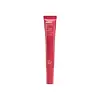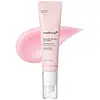What's inside
What's inside
 Key Ingredients
Key Ingredients

 Benefits
Benefits

 Concerns
Concerns

 Ingredients Side-by-side
Ingredients Side-by-side

Water
Skin ConditioningCaprylic/Capric Triglyceride
MaskingGlycerin
HumectantPropanediol
SolventSodium Acrylates Copolymer
Caffeine
Skin ConditioningPhenoxyethanol
PreservativeLecithin
EmollientButylene Glycol
HumectantSqualane
EmollientMica
Cosmetic ColorantTocopheryl Acetate
AntioxidantPolysorbate 80
EmulsifyingRetinal
Skin ConditioningSucrose Laurate
Emollient1,2-Hexanediol
Skin ConditioningAcetyl Tetrapeptide-5
HumectantWater
Skin ConditioningGlycerin
HumectantDipropylene Glycol
HumectantNiacinamide
SmoothingCaprylic/Capric Triglyceride
MaskingPentaerythrityl Tetraethylhexanoate
EmollientCetearyl Alcohol
EmollientGlycereth-26
HumectantButylene Glycol Dicaprylate/Dicaprate
EmollientBis-Behenyl/Isostearyl/Phytosteryl Dimer Dilinoleyl Dimer Dilinoleate
EmollientCetearyl Olivate
Sorbitan Olivate
EmulsifyingPropylene Glycol Dibenzoate
Skin ConditioningPullulan
1,2-Hexanediol
Skin ConditioningGlyceryl Stearate
EmollientVinyldimethicone
Hydroxyacetophenone
AntioxidantHydroxyethyl Acrylate/Sodium Acryloyldimethyl Taurate Copolymer
Emulsion StabilisingHydrogenated Lecithin
EmulsifyingSodium Acrylate/Sodium Acryloyldimethyl Taurate Copolymer
Emulsion StabilisingSodium Dna
Skin ConditioningPolyisobutene
Butylene Glycol
HumectantEthylhexylglycerin
Skin ConditioningPropanediol
SolventMelia Azadirachta Leaf Extract
Skin ConditioningAdenosine
Skin ConditioningMelia Azadirachta Flower Extract
Skin ConditioningCurcuma Longa Root Extract
MaskingSorbitan Isostearate
EmulsifyingSorbitan Oleate
EmulsifyingCaprylyl/Capryl Glucoside
CleansingFragaria Chiloensis Fruit Extract
Skin ConditioningHedera Helix Leaf/Stem Extract
AntimicrobialCyanocobalamin
Skin ConditioningCitrus Nobilis Peel Extract
MaskingRetinol
Skin ConditioningOcimum Sanctum Leaf Extract
Skin ConditioningLespedeza Capitata Leaf/Stem Extract
Skin ConditioningCorallina Officinalis Extract
Skin ConditioningSodium Hyaluronate
HumectantCaffeine
Skin ConditioningCoffea Arabica Seed Extract
MaskingHydrolyzed Extensin
Skin ConditioningHydrolyzed Hyaluronic Acid
HumectantCopper Tripeptide-1
Skin ConditioningSodium Acetylated Hyaluronate
HumectantAcetyl Hexapeptide-8
HumectantPalmitoyl Pentapeptide-4
Skin ConditioningPalmitoyl Tetrapeptide-7
Skin ConditioningPalmitoyl Tripeptide-1
Skin ConditioningWater, Glycerin, Dipropylene Glycol, Niacinamide, Caprylic/Capric Triglyceride, Pentaerythrityl Tetraethylhexanoate, Cetearyl Alcohol, Glycereth-26, Butylene Glycol Dicaprylate/Dicaprate, Bis-Behenyl/Isostearyl/Phytosteryl Dimer Dilinoleyl Dimer Dilinoleate, Cetearyl Olivate, Sorbitan Olivate, Propylene Glycol Dibenzoate, Pullulan, 1,2-Hexanediol, Glyceryl Stearate, Vinyldimethicone, Hydroxyacetophenone, Hydroxyethyl Acrylate/Sodium Acryloyldimethyl Taurate Copolymer, Hydrogenated Lecithin, Sodium Acrylate/Sodium Acryloyldimethyl Taurate Copolymer, Sodium Dna, Polyisobutene, Butylene Glycol, Ethylhexylglycerin, Propanediol, Melia Azadirachta Leaf Extract, Adenosine, Melia Azadirachta Flower Extract, Curcuma Longa Root Extract, Sorbitan Isostearate, Sorbitan Oleate, Caprylyl/Capryl Glucoside, Fragaria Chiloensis Fruit Extract, Hedera Helix Leaf/Stem Extract, Cyanocobalamin, Citrus Nobilis Peel Extract, Retinol, Ocimum Sanctum Leaf Extract, Lespedeza Capitata Leaf/Stem Extract, Corallina Officinalis Extract, Sodium Hyaluronate, Caffeine, Coffea Arabica Seed Extract, Hydrolyzed Extensin, Hydrolyzed Hyaluronic Acid, Copper Tripeptide-1, Sodium Acetylated Hyaluronate, Acetyl Hexapeptide-8, Palmitoyl Pentapeptide-4, Palmitoyl Tetrapeptide-7, Palmitoyl Tripeptide-1
 Reviews
Reviews

Ingredients Explained
These ingredients are found in both products.
Ingredients higher up in an ingredient list are typically present in a larger amount.
1,2-Hexanediol is a synthetic liquid and another multi-functional powerhouse.
It is a:
- Humectant, drawing moisture into the skin
- Emollient, helping to soften skin
- Solvent, dispersing and stabilizing formulas
- Preservative booster, enhancing the antimicrobial activity of other preservatives
Butylene Glycol (or BG) is used within cosmetic products for a few different reasons:
Overall, Butylene Glycol is a safe and well-rounded ingredient that works well with other ingredients.
Though this ingredient works well with most skin types, some people with sensitive skin may experience a reaction such as allergic rashes, closed comedones, or itchiness.
Learn more about Butylene GlycolCaffeine is most associated with coffee, tea, and cacao. In skincare, it helps with calming inflammation and is rich in antioxidants.
While caffeine is used to treat cellulite and and dark circles, further studies are needed to prove this. It has been believed to help with these skin conditions due to its ability to dilate blood vessels and increase blood flow.
Some studies are looking into caffeine's ability to protect against UV rays.
Learn more about CaffeineThis ingredient is an emollient, solvent, and texture enhancer. It is considered a skin-softener by helping the skin prevent moisture loss.
It helps thicken a product's formula and makes it easier to spread by dissolving clumping compounds.
Caprylic Triglyceride is made by combining glycerin with coconut oil, forming a clear liquid.
While there is an assumption Caprylic Triglyceride can clog pores due to it being derived from coconut oil, there is no research supporting this.
Learn more about Caprylic/Capric TriglycerideGlycerin is already naturally found in your skin. It helps moisturize and protect your skin.
A study from 2016 found glycerin to be more effective as a humectant than AHAs and hyaluronic acid.
As a humectant, it helps the skin stay hydrated by pulling moisture to your skin. The low molecular weight of glycerin allows it to pull moisture into the deeper layers of your skin.
Hydrated skin improves your skin barrier; Your skin barrier helps protect against irritants and bacteria.
Glycerin has also been found to have antimicrobial and antiviral properties. Due to these properties, glycerin is often used in wound and burn treatments.
In cosmetics, glycerin is usually derived from plants such as soybean or palm. However, it can also be sourced from animals, such as tallow or animal fat.
This ingredient is organic, colorless, odorless, and non-toxic.
Glycerin is the name for this ingredient in American English. British English uses Glycerol/Glycerine.
Learn more about GlycerinPropanediol is an all-star ingredient. It softens, hydrates, and smooths the skin.
It’s often used to:
Propanediol is not likely to cause sensitivity and considered safe to use. It is derived from corn or petroleum with a clear color and no scent.
Learn more about PropanediolWater. It's the most common cosmetic ingredient of all. You'll usually see it at the top of ingredient lists, meaning that it makes up the largest part of the product.
So why is it so popular? Water most often acts as a solvent - this means that it helps dissolve other ingredients into the formulation.
You'll also recognize water as that liquid we all need to stay alive. If you see this, drink a glass of water. Stay hydrated!
Learn more about Water